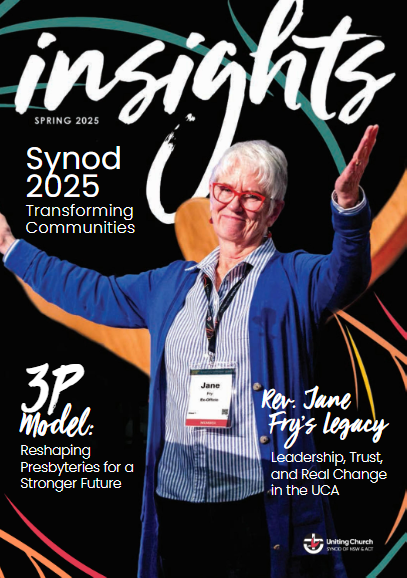The pace of life leaves little room for pause. Many people measure their value by what they produce, how full their calendars are, and how indispensable they appear. Yet within the Christian tradition lies an alternative rhythm – one that values rest as much as work and recognises worship as essential to human flourishing. The call to balance work, rest, and worship is not about managing time more efficiently but about recovering a way of life shaped by God’s pattern of creation and redemption.
The Sabbath sits at the centre of that pattern. It was never intended as a burden or restriction. In the creation story, God rests on the seventh day, not because of fatigue but as a declaration that creation is complete and good. When the Sabbath command appears in the Ten Commandments, it is given as a gift – a reminder that life does not depend on endless labour. The people of Israel were to cease from work so they might remember who sustains them. The Sabbath broke the cycle of slavery to productivity that had defined their time in Egypt. To keep Sabbath was to affirm that their worth was not measured by output but by belonging.
Over time, however, the Sabbath became distorted. Rules multiplied and the original intent was lost. Jesus’ teaching reclaimed its purpose. “The Sabbath was made for humankind, not humankind for the Sabbath.” His words restored the Sabbath as a day of life, mercy, and renewal. When Jesus healed on the Sabbath, he was not abolishing the law but returning it to its proper place – serving human need and honouring God. Sabbath rest remains a gift, not a test of spiritual discipline.
In today’s culture, rest can feel like an act of resistance. The pull toward constant activity is strong. Many workplaces reward those who work long hours, respond to messages late at night, or treat exhaustion as a sign of dedication. Even within ministry settings, the temptation to prove faithfulness through busyness can be hard to resist. Yet the Sabbath invites a different posture. To rest is to say that God, not human effort, holds the world together. It is to trust that stepping back from work does not mean losing control but receiving life as grace.
This kind of rest is not limited to one day of the week. Sabbath teaches a rhythm that can shape the whole of life. Setting boundaries around time, making space for silence, and cultivating habits of prayer and reflection all flow from this understanding. Rest becomes not escape but participation in God’s ongoing work of renewal. It restores perspective and reminds people of their dependence on God.
Jesus himself lived within such a rhythm. The Gospels describe periods of intense activity followed by times of solitude and prayer. After teaching the crowds or healing the sick, he would withdraw to a quiet place to pray. These were not moments of avoidance but of alignment. In prayer and retreat, Jesus renewed his relationship with the Father and clarified his purpose. His work flowed from communion, not compulsion. This balance of engagement and withdrawal offers a pattern for Christian life and ministry today.
Recovering that rhythm requires intentional choices. It means recognising that not every demand is urgent, and not every opportunity must be seized. The practice of rest can expose what people believe about themselves and about God. If rest feels irresponsible, it may reveal a belief that everything depends on personal effort. If worship feels secondary to work, it may suggest a disordered sense of calling. The invitation of Sabbath is to reorder these loves – to work faithfully, rest trustfully, and worship wholeheartedly.
Worship itself completes the pattern. It gathers work and rest into a single act of orientation toward God. In worship, people remember that all labour and leisure find their meaning in God’s purposes. The rhythm of the week culminates not in idleness but in praise. Worship reorients the heart and strengthens the community for service. It also prevents rest from becoming self-indulgence. True rest is not simply about recovery from fatigue but about renewal for participation in God’s mission.
For many, the challenge lies not in understanding these principles but in practising them amid real constraints. Economic pressures, caregiving responsibilities, and the demands of ministry can make regular rest seem unrealistic. Yet even small acts of resistance matter. Turning off a device during a meal, setting aside time for prayer, or taking a walk without purpose can become quiet forms of Sabbath-keeping. They remind the body and mind that life’s worth is not determined by productivity.
Communities also play a role. Churches that model healthy rhythms of work, rest, and worship bear witness to the gospel in tangible ways. When leaders take time to rest, they give permission for others to do the same. When congregations value worship over activity, they resist the cultural narrative that busyness equals significance. The shared life of the church can embody God’s rhythm and invite others into it.
Balancing work, rest, and worship is not a formula to master but a way to live faithfully. It calls for attentiveness to God’s presence in every part of life — in the tasks of daily work, the stillness of rest, and the gathering of worship. The Sabbath remains a reminder that the world’s demands are not ultimate and that human striving finds its limit and its fulfilment in God. To accept the gift of rest is to acknowledge that the work of redemption does not depend on human hands but has already been completed in Christ.






